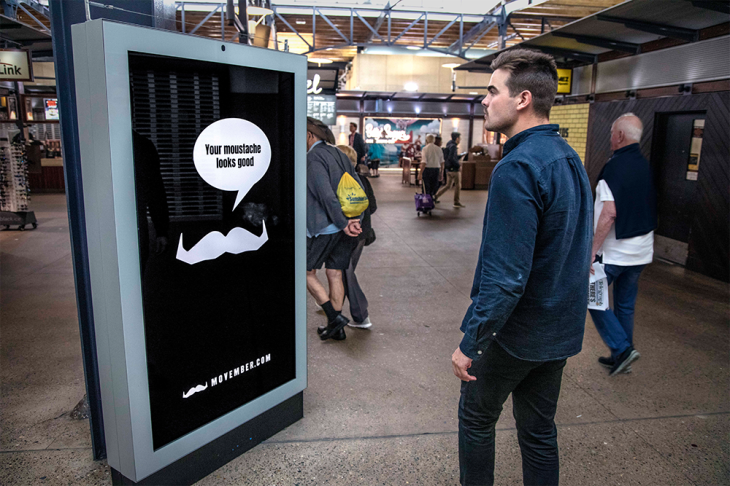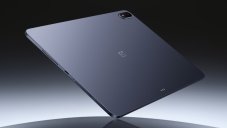How Far Facial Recognition Has Gone To Threaten Our Rightful Privacy
Aadhya Khatri - Feb 26, 2019

If you go shopping somewhere like Westfield, chances are you are being scanned to harvest data by facial recognition technology.
- The Ultimate Tech Betrayal: OpenAI's Nuclear Revenge Plot Against Sugar Daddy Microsoft
- Microsoft Notepad Gets Major Update: Bold Text, Hyperlinks, and Markdown Support
- Microsoft Surface: A Shift from Innovation to Stability?
If you go shopping somewhere like Westfield, a shopping center in London, chances are the advertisements you are seeing are not randomly played at all but rather the result of facial recognition technology. The billboards you think have nothing special about are concealing several cameras that constantly gather information of visitors and make a projection of their age, sex, and even how they are feeling at the moment. After that, ads are picked to be showed to ensure maximum effectiveness.
In the case of Westfield, its system was created by Quividi, a France-based provider of attention analytics solution for the Digital Out of Home (DOOH) industry. The system uses visitors’ images it gathers from the hidden cameras and runs them through certain analytical tools to come up with their demographics. When the system has detected shoppers’ reaction to the ads, this information will be shared with the ads’ owners. 9 out of 10 cases, the system can correctly tell shoppers’ gender. It can also estimate their age with 5 years more or less and put them into 5 categories of mood.

What advertisers care about the most is how visitors are feeling, especially what they feel about a particular brand or store. This aspect is the hardest to tell, so the accuracy rate is just 80%.
These smart billboards are now found in 41 Westfield shopping centers in Australia and New Zealand, making up a total of 1,600. The chain’s parent company said that the data they collected is entirely not identified by name and what they used was facial detection rather than facial recognition. In other words, they do not try to find out who is the person they are scanning. However, the company did not reveal if they would use the FRT or not.
This kind of technology is attracting the attention of large corporations as a better way to engage people. Quividi has made itself a big customer base with some huge brands like Coca-Cola, 7-Eleven, and HSBC.
Terry Hartmann, Vice President (Asia Pacific) at Cognitec Systems, compared the act of commercializing facial recognition technology to Facebook exploiting users’ search history to facilitate better-targeted advertisement.
While facial detection, identifying people demographics anonymously, does not sound too bad, this might lead to a more controversial facial recognition in the future.
According to Dr. Dong Xu, Professor in the Electrical Engineering and Computer Science Department, University of Sydney, if comparing a typical human and an FRT at identifying faces, with good-quality images and decent lighting, the FRT will probably have a higher accuracy rate. It is now able to single out a particular person from millions of photos. He also said that the technology’s reliability in detecting criminals might even surpass that of fingerprints.
While the technology is still under development and just has reached an infant stage, its potential is huge. Walmart, Google, and Facebook have joined the race and invested in facial recognition. The market for FRT is now estimated to be $3 billion and will double by 2021.
Explaining the reason behind their investment, Walmart and Target said that they hoped the technology would help them detect wrongful acts while identifying loyal customers was what driven 7-Eleven. Facebook claims that the technology would assist users with their online identity.
Facial recognition is thriving in China and is used for a wide range of purposes from surveillance to the paying process in stores. Customers can now finish the transactions by letting a system scan their faces. FRT is also utilized in the hospitality sector and ATMs. People can check in, check out, and withdraw money with their faces to prove their identity.

Alibaba and Guess are having ambitious plans for the FRT. If what they are working on, called FashionAI yields positive results, shoppers can see how they look with a particular outfit on without actually wearing it.
No one can deny the enormous benefits of FRT. With facial recognition, procedures at airports are quickened up. Problematic gamblers in Canada now have FRT to control themselves. And in Australia, the technology is used by border guards to detect criminals.
However, these great advantages also go hand in hand with pressing issues. With facial recognition getting more accurate and capable, the question here is how we can protect our privacy against its invasion?
Early this year, Microsoft, Google, and Amazon received requests from 85 civil right organizations asking them not to let the government getting this technology. In answer to this demand, Microsoft said that banning the government entirely from using facial recognition was not necessary. The technology could do good deeds like identifying people with certain illness or finding missing children.
But it is not to say that the company does not recognize its potential threat. Microsoft had demanded the government to lay down legislation accordingly to control the use of this technology. Last year, the company’s president, Brad Smith, published a post pointing out three main issues the government needed to find solutions to, including privacy invasion, bias, and negative influence on democracy.

Australia is currently letting the act develops out of control. Neither Quividi nor Westfield needs shoppers’ consent or to alert them when they collect their personal data. In this respect, European citizens seem to have more control over how the data is used under the newly enacted General Data Protection Regulation. With this law implemented, when asking for people’s consent, the language used must be easy to understand, and citizens should be able to rescind consent as fast as when they grant it. David Vaile, executive director of Australian Cyberspace Law and Policy Centre, agreed that the country needed to keep up with other nations in this respect.
There is a bill which proposes sharing information gathered by the FRT among the commonwealth government and some non-government entities by creating a hub called the Capability. While the bill did mention asking for people’s consent, but no further detail on how exactly to do that or a specific date on which the bill is voted can be found.
David Paris, a member of Digital Rights Watch, an Australian charity organization founded in 2016, said that if measures were not taken right away, there would be a time when no place was safe from surveillance.
Featured Stories

Gadgets - Jul 21, 2025
COLORFUL Launches iGame Shadow II DDR5 Memory for AMD Ryzen 9000 Series

Gadgets - Jun 23, 2025
COLORFUL SMART 900 AI Mini PC: Compact Power for Content Creation

Review - Jun 18, 2025
Nintendo Switch 2 Review: A Triumphant Evolution Worth the Wait

Gadgets - Jun 18, 2025
Starlink: Why It’s a Big Deal for U.S. Internet in 2025

Gadgets - Jun 17, 2025
How Custom PC Setups Support India's Esports Athletes in Global Competition

Gadgets - Jun 12, 2025
Lava Prowatch Xtreme Launches with Google Fit Integration

Gadgets - Jun 07, 2025
Fujifilm Instax Mini 41 Launches in India: Stylish Instant Camera Now Available...

Mobile - Jun 07, 2025
Realme C73 5G Launches in India: Budget 5G Phone Starts at ₹10,499

Gadgets - Jun 07, 2025
OnePlus 13s Makes Indian Debut: Compact Flagship Brings Premium Features at...

Gadgets - Jun 07, 2025
Comments
Sort by Newest | Popular